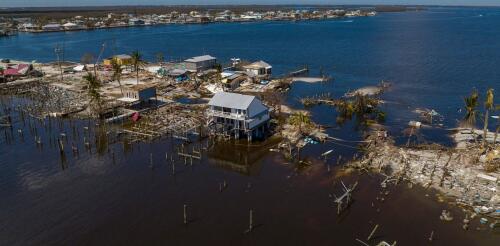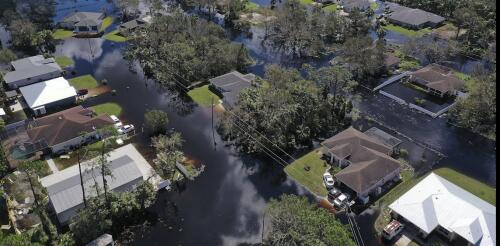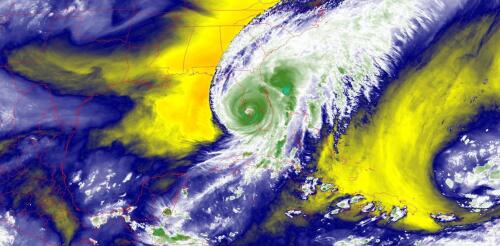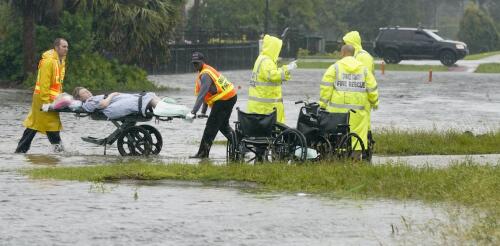Hurricane Ian
Hurricane Ian left an extraordinarily broad path of destruction across much of South Florida. That was evident in reports from the ground, but it also shows up in satellite data. Using a new method, our team of spatial and environmental analysts was able to quickly provide a rare big picture view of damage across the entire state. Satellite images and artificial intelligence reveal Hurricane Ian’s widespread damage. The dark areas have a high probability of damage. Su Ye By using satellite images from before the storm and real-time images from four satellite sensors, together with artificial intelligence, we created a disaster monitoring system that can map damage in 30-meter resolution and continuously update the data. It’s a snapshot of what faster, more targeted disaster monitoring can look like in the future – and something that could eventually be deployed nationwide. How arti...
Hurricane Ian’s widespread damage is another disaster for Florida’s already shaky insurance industry. Even though home insurance rates in Florida are nearly triple the national average, insurers have been losing money. Six have failed since January 2022. Now, insured losses from Ian are estimated to exceed US$40 billion Hurricane risk might seem like the obvious problem, but there is a more insidious driver in this financial train wreck. Finance professor Shahid Hamid, who directs the Laboratory for Insurance at Florida International University, explained how Florida’s insurance market got this bad – and how the state’s insurer of last resort, Citizens Property Insurance, now carrying more than 1 million policies, can weather the storm. What’s making it so hard for Florida insurers to survive? Florida’s insurance rates have almost doubled in the past five years, yet insurance companies are still losing money for three main reasons....
Hurricane Ian hit Florida in September 2022 as one of the United States’ most powerful hurricanes on record, and it followed a two-week string of massive, devastating storms around the world. A few days earlier in the Philippines, Typhoon Noru gave new meaning to rapid intensification when it blew up from a tropical storm with 50 mph winds to a Category 5 monster with 155 mph winds the next day. Hurricane Fiona flooded Puerto Rico, then became Canada’s most intense storm on record. Typhoon Merbok gained strength over a warm Pacific Ocean and tore up over 1,000 miles of the Alaska coast. Major storms hit from the Philippines in the western Pacific to the Canary Islands in the eastern Atlantic, to Japan and Florida in the middle latitudes and western Alaska and the Canadian Maritimes in the high latitudes. A lot of people are asking about the role rising global temperatures play in storms like these. It’s not always a simple answer....
Hurricane Ian, one of the most powerful storms to hit the U.S., tore part of the roof off a hospital in Port Charlotte, Florida, and flooded the building’s lower level emergency room, sending staff scrambling to move patients as water poured in. At least nine hospitals and dozens of nursing homes had to transfer patients after losing access to clean water because of the storm. Health care services are essential at any time, but when disasters strike, those services become even more crucial as injuries rise. Yet in many coastal communities, the hospitals were built in locations that are at increasingly high risk of flooding during hurricanes. I study ways to improve disaster communications, including how health care organizations prepare for severe weather events. Here’s what research shows about the rising risks. High percentage of coastal hospitals at risk Given the impact of climate change, many areas are susceptible to severe weather events and hazards. Healt...
As mandatory evacuations for Hurricane Ian began in Florida and the warnings about damaging wind and flooding intensified, I called my aging parents to check in. Being a disaster researcher, my concern for them was already in high gear, even though they weren’t directly in an evacuation zone. My dad takes medications that require refrigeration, special needles and a sterile environment to administer. My mom is in the early stages of dementia. Both are not as spry as they used to be. I heard the worry in their voice about their safety, about my dad’s health needs, and about what might happen to their house. As I sat at home hundreds of miles away, I thought about all the reasons why leaving isn’t always a clear decision. Concerns about health and home security are two reasons older adults might fear evacuating during disasters like Hurricane Harvey in 2017. Scott Olson/Getty Images...



